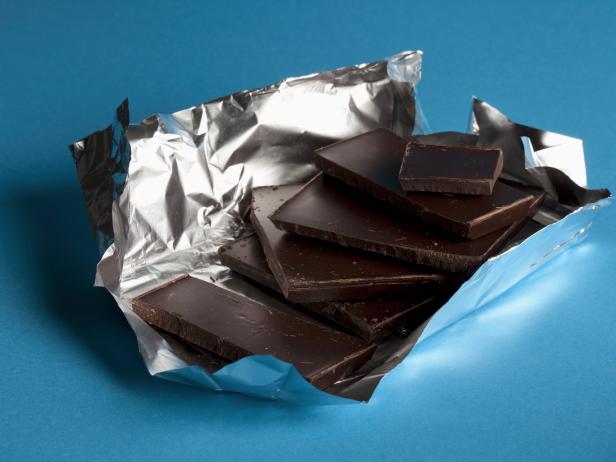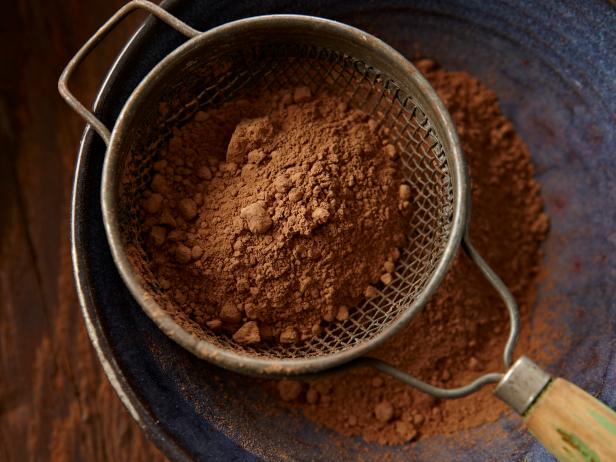Is Dark Chocolate Safe to Eat?
A recent Consumer Reports article found heavy metals, cadmium and lead, in some dark chocolates.

Larry Washburn/Getty Images
Dark chocolate is one treat we can feel good about enjoying – or can we? It deliciously melts on the tongue and it’s also one of the most concentrated sources of powerful antioxidant flavonoids. But reports from Consumer Reports and from As You Sow recently included cautionary statements about the amount of heavy metals, cadmium and lead, in some dark chocolates.
Does this mean your daily indulgence in dark chocolate needs to stop? The short answer is probably not. But here’s what you need to know.
How Does Cadmium Affect Your Health?
Cadmium is found in soil, and taken up by plants grown in soil that contains it. Daily consumption of heavy metals through plants and in the environment can cause cognition problems especially in children and the babies of pregnant women. Since cadmium can build up in the kidney, large amounts can cause health problems for people with diabetes.
No amount of heavy metal consumption is good, but our bodies do have ways to mitigate its effects. Eating enough of nutrients calcium, vitamin D, iron and especially zinc can help decrease issues caused by cadmium absorption in the body.
Consumer Reports tested the amount of cadmium and lead found in one ounce of 23 brands of dark chocolate. Then they compared these amounts to the maximum allowable dose from OEHHA, the group that sets California’s Proposition 65. According to different government health authorities, upper limit cadmium numbers are:
- 4.1 micrograms per day, for all ages, set by California’s Proposition 65
- 28 micrograms per day, calculated for a 180-pound adult using the tolerable weekly intake of 2.5 micrograms per kilogram of body weight, set by the European Food Safety Authority (EFSA)
- 66 micrograms per day, calculated for a 180-pound adult using the tolerable monthly intake of 25 micrograms per kilograms of body weight set by the Joint FAO/WHO Expert Committee on Food Additives (JECFA)
- Only 3 micrograms per day for a 20-pound child according to the EFSA, and 7 micrograms per day according to JECFA
How do these numbers compare with chocolate and other cadmium-containing plant foods?
According to this study, the top five cadmium concentrations in foods analyzed in the FDA Total Diet Study were:
- Sunflower seeds – 10 micrograms per serving
- Cooked spinach – 3.5 micrograms per serving
- Potato chips – 2.6 micrograms per serving
- Leaf lettuce – 5.5 micrograms per serving
- Iceberg lettuce – 4.8 micrograms per serving
The amount of cadmium in some chocolates per serving analyzed by As You Sow:
- Equal Exchange Organic Dark Chocolate 80 Cacao – 4.3 micrograms of cadmium
- Hershey’s cocoa powder – 2.5 micrograms of cadmium
- Hershey’s Special Dark chocolate – 1.4 micrograms of cadmium
Based on this data, consumption of chocolate may not be the biggest source of cadmium in many people’s diets.
How Does Lead Affect Your Health?
Cognitive effects on infants and children from lead exposure (from food and the environment) can be serious, which is why children are routinely screened for lead. It’s also why the FDA is proposing to especially limit lead exposure in baby foods such as processed fruits, vegetables, yogurts, custards, meat and infant cereals. (This proposal does not mention chocolate or any candy as a major source of lead.)
There is less variability in the upper limits set for lead:
- 0.5 micrograms per serving was used in the Consumer Reports article, and by California’s Proposition 65
- 0.5 micrograms per serving is the FDA (enforceable) action level for foods consumed by infants and children. The upper limit for adults would be higher (although is not mentioned).
The amount of lead in some chocolates per serving analyzed by Consumer Reports:
- Trader Joe’s Dark Chocolate 72 percent Cacao – 0.96 micrograms
- Lindt Excellence Dark Chocolate 85 percent Cocoa – 0.83 micrograms
- Chocolove Extreme Dark Chocolate 88 percent Cocoa – 1.2 micrograms
The FDA advises that since lead is in many foods, Americans should eat from a wide variety of food groups and not eliminate food groups, which may lead to deficiencies.
Heavy Metals in Other Foods
While no amount of ingesting heavy metals is safe, if you want to eat plants, which health professionals agree is a healthy way to eat, trace heavy metal consumption is unavoidable. Variety is key. For example, if rice is a staple food, researchers suggest it should still be consumed, but alternated with other grains.
Additionally the FDA is suggesting that more research be done on how heavy metals are absorbed from food, as it can vary. For example, this study examined eating more than a serving of sunflower seeds (containing 19 micrograms of cadmium per day) for 48 weeks and found no adverse effect on the body burden of cadmium.

Lew Robertson/Getty Images
How to Safely Eat Chocolate Everyday
The key to eating dark chocolate is to make it part of a healthy and varied diet, just like any other single food. This means eat a variety of fruits, vegetables, grains, dairy, seafood, meats and other protein-rich foods.
And get creative in your chocolate consumption:
- Try different chocolates from around the world, including the only chocolate grown in the U.S. from Lydgate Farms Chocolate in Hawaii
- Keep your daily serving to one ounce
- Save the higher percentage dark chocolate (above 65 percent) for adults, not kids
- Use cocoa powder, which is lower in heavy metals. Chocolate pudding, anyone?
- Enjoy milk chocolate; it contains fewer dark chocolate solids. Plus, milk is a source of calcium, which inhibits heavy metal absorption.
- Every day, eat foods containing the following nutrients which help counter the absorption of lead and cadmium: Selenium (fish at least twice weekly, Brazil nuts, pasta, beef, pork, chicken), Zinc (oysters, beef, breakfast cereal, oatmeal, pumpkin seeds), Calcium (milk, yogurt, cheese, tinned sardines, soy beverages and milk chocolate which contains over five percent daily value), Iron (beef, mussels, oysters, fortified breakfast cereals, chicken, canned white beans and dark chocolate which has over 10 percent daily value)
Bottom Line: Dark chocolate is an enjoyable source of flavonoid antioxidants. Along with other plant-based foods, it also contains some heavy metals. Eating a balanced diet – meaning different foods in each of the food groups on a weekly basis – helps counter long-term exposure. It’s especially important to consume foods containing selenium, zinc, calcium, and iron. Children, pregnant women, and potentially people with diabetes should avoid daily consumption.
Serena Ball, MS, RD is a registered dietitian nutritionist, culinary instructor, and mom of five children. She blogs at TeaspoonOfSpice.com and is the author of the best-selling The 30-Minute Mediterranean Diet Cookbook, Easy Everyday Mediterranean Diet Cookbook and the newly-released The Sustainable Mediterranean Diet Cookbook. Follow her @TspCurry on Instagram.
Related Content:
































